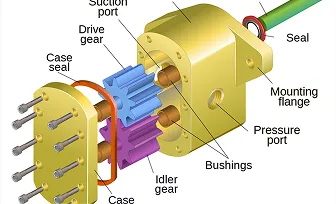Exploded view and Detailed assembly drawings

Introduction to Exploded View and Detailed Assembly Drawings
Exploded view and detailed assembly drawings are essential for conveying how different parts of an object fit together. These drawings provide clear, step-by-step instructions for assembly and disassembly, ensuring that the design is easily understood and accurately constructed. They are commonly used in product manuals, maintenance guides, and technical specifications.
Exploded View Drawings
Exploded view drawings show the individual components of an assembly separated but aligned to indicate how the parts fit together. This visualization helps engineers, manufacturers, and assembly teams better understand the relationships between different parts. Exploded views are particularly useful in product assembly guides and technical documentation.
Detailed Assembly Drawings
Detailed assembly drawings provide comprehensive views of an assembled product, showing dimensions, material specifications, and assembly instructions. These drawings include exploded views, section cuts, and detailed annotations that provide critical information for building or assembling the product. Precision in these drawings ensures that all components are properly aligned and assembled during production.
Importance of Detailed Annotations
Annotations on exploded and assembly drawings are crucial for clarifying key details such as material types, part numbers, fasteners, and assembly steps. These notes ensure that the assembler follows the correct sequence and method for assembly, preventing errors and minimizing the need for rework. Accurate annotations increase the efficiency and effectiveness of the assembly process.
Tools for Creating Exploded View and Assembly Drawings
Software such as AutoCAD, SolidWorks, and Fusion 360 are commonly used to create exploded views and detailed assembly drawings. These tools allow designers to visualize complex assemblies, break down components into simpler parts, and add detailed dimensions and annotations. They also support creating interactive 3D models that can be rotated and explored for better understanding.
Applications of Exploded View and Assembly Drawings
Exploded view and assembly drawings are used in various industries, including automotive, aerospace, electronics, and consumer products. They are essential for creating user manuals, maintenance guides, product packaging, and instructional materials. In manufacturing, these drawings ensure that assembly lines follow the correct procedures for efficient and accurate assembly.
Benefits of Exploded View and Assembly Drawings
The key benefits of exploded view and detailed assembly drawings include enhanced understanding of the product, minimized assembly errors, efficient manufacturing processes, and improved communication between design, engineering, and production teams. These drawings contribute to smoother production cycles and higher-quality final products.
Final Output & Deliverables
The final deliverables for exploded view and assembly drawings typically include 2D CAD files (e.g., DWG, DXF) or interactive 3D files (e.g., STEP, IGES) that can be used for manufacturing, assembly, or documentation. These drawings must be accurate, clear, and easy to understand to ensure proper assembly and functionality of the product.
